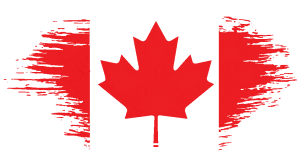How to Become a Lifeguard
Posted in Aquatic Articles, on December 05, 2022

Lifeguarding is an extremely rewarding job that gives you the opportunities to develop your skills in responsibility, communication, and physical fitness. The process to become a lifeguard may seem challenging, but we’re here to help!
In Canada, lifeguards are certified by the Lifesaving Society. Below is the path for certification:

In order to become a Lifeguard, you must take at least one first aid course and three water-based courses; Bronze Medallion, Bronze Cross and National Lifeguard. These courses are designed to grow your skills in lifesaving and lifeguarding. Here is breakdown of each course:
Step One: Bronze Medallion
To take this course you must be 13 years old or have completed your Bronze Star, an optional prerequisite course. This course introduces the basics of water rescues, teaching you how to become a lifesaver while also touching on swimming ability.
Step Two: Emergency First Aid with CPR-B
This 8-hour course will go over general first aid knowledge, covering topics like victim assessment, CPR, choking and more. This content is also included in the Standard First Aid with CPR-C course, so many students choose to take their Standard First Aid instead at this point in order to skip step four.
Step Three: Bronze Cross
After completing the first two steps, you can take the Bronze Cross course. The main focus of this course is to begin the transition from a Lifesaver to a Lifeguard. You will learn the fundamentals of Lifeguarding including scanning and supervision, communication, and rescue response. Once you complete this course you may work as an Assistant Lifeguard or take the National Lifeguard course.
Step Four: Standard First Aid with CPR-C
This 16-hour first aid course covers all of the content included in Emergency First Aid, plus topics such as spinal injuries, heat & cold injuries, and bone & joint injuries. Once complete, you will have the appropriate level of first aid knowledge to take the National Lifeguard course.
Step Five: National Lifeguard
To take this 40-hour course, you must be at least 15 years of age and have both your Bronze Cross and Standard First Aid with CPR-C. There are four different streams of the Lifeguard National course: Pool, Waterpark, Waterfront, and Surf. The most common Lifeguard certification in Canada is National Lifeguard- Pool. This course covers all the content you need to allow you to work as a pool Lifeguard anywhere in Canada. For more information about what this course entails, check out our blog post about it here!
At Lifeguarding Academy, we offer crash courses for all of the above courses. This means that you can complete your training in as little as four weekends. Register today!



